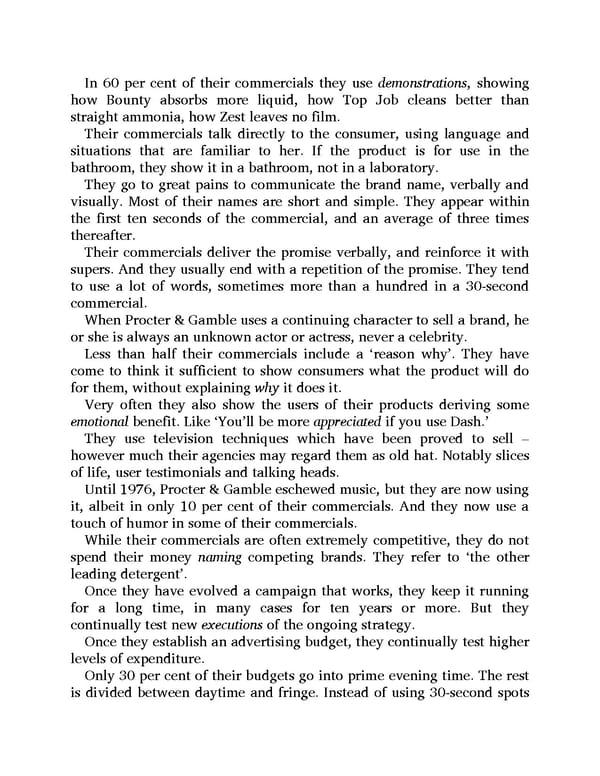In 60 per cent of their commercials they use demonstrations, showing how Bounty absorbs more liquid, how Top Job cleans better than straight ammonia, how Zest leaves no film. Their commercials talk directly to the consumer, using language and situations that are familiar to her. If the product is for use in the bathroom, they show it in a bathroom, not in a laboratory. They go to great pains to communicate the brand name, verbally and visually. Most of their names are short and simple. They appear within the first ten seconds of the commercial, and an average of three times thereafter. Their commercials deliver the promise verbally, and reinforce it with supers. And they usually end with a repetition of the promise. They tend to use a lot of words, sometimes more than a hundred in a 30-second commercial. When Procter & Gamble uses a continuing character to sell a brand, he or she is always an unknown actor or actress, never a celebrity. Less than half their commercials include a ‘reason why’. They have come to think it sufficient to show consumers what the product will do for them, without explaining why it does it. Very often they also show the users of their products deriving some emotional benefit. Like ‘You’ll be more appreciated if you use Dash.’ They use television techniques which have been proved to sell – however much their agencies may regard them as old hat. Notably slices of life, user testimonials and talking heads. Until 1976, Procter & Gamble eschewed music, but they are now using it, albeit in only 10 per cent of their commercials. And they now use a touch of humor in some of their commercials. While their commercials are often extremely competitive, they do not spend their money naming competing brands. They refer to ‘the other leading detergent’. Once they have evolved a campaign that works, they keep it running for a long time, in many cases for ten years or more. But they continually test new executions of the ongoing strategy. Once they establish an advertising budget, they continually test higher levels of expenditure. Only 30 per cent of their budgets go into prime evening time. The rest is divided between daytime and fringe. Instead of using 30-second spots
 Ogilvy on Advertising Page 223 Page 225
Ogilvy on Advertising Page 223 Page 225